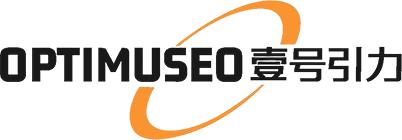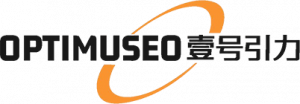In today's digital age, having a strong online presence is crucial for businesses to succeed. This is where search engine optimization (SEO) and paid advertising come into play. SEO is the process of optimizing a website to rank higher in search engine results pages (SERPs) organically, while paid advertising involves paying for ad space on search engines or social media platforms. Both strategies are essential for driving traffic to a website and increasing brand visibility.
SEO is a long-term strategy that requires time and effort to see results, but it can provide sustainable traffic and leads over time. On the other hand, paid advertising offers immediate visibility and can be a great way to jumpstart a marketing campaign. By understanding the role of SEO and paid advertising, businesses can leverage both strategies to maximize their online presence and reach their target audience effectively.
Identifying the Right Keywords for SEO and Paid Advertising
Keywords are the foundation of both SEO and paid advertising. Identifying the right keywords is crucial for targeting the right audience and driving relevant traffic to a website. For SEO, keyword research involves finding the most relevant and high-volume keywords related to a business's products or services. These keywords should be strategically incorporated into website content, meta tags, and other on-page elements to improve organic search rankings.
In paid advertising, keyword research is equally important for creating targeted ad campaigns. Businesses need to identify high-converting keywords with a good search volume and low competition to maximize their ad spend. By understanding the search intent behind specific keywords, businesses can create compelling ad copy that resonates with their target audience. Overall, identifying the right keywords for both SEO and paid advertising is essential for driving quality traffic and maximizing the effectiveness of marketing efforts.
Creating Compelling Content for SEO and Paid Advertising
Content is king in the world of digital marketing. Whether it's for SEO or paid advertising, creating compelling content is essential for engaging with the target audience and driving conversions. For SEO, high-quality content that is relevant, informative, and valuable to the audience can help improve search rankings and attract organic traffic. This can include blog posts, articles, infographics, videos, and other forms of content that provide value to the audience.
In paid advertising, compelling ad copy and visual content are crucial for capturing the attention of potential customers and driving them to take action. Businesses need to create ad content that is persuasive, relevant, and aligned with the target audience's needs and interests. This can include catchy headlines, compelling calls-to-action, and visually appealing graphics or videos. By creating compelling content for both SEO and paid advertising, businesses can effectively engage with their audience and drive meaningful results.
Optimizing Landing Pages for SEO and Paid Advertising
Landing pages play a critical role in both SEO and paid advertising. For SEO, optimizing landing pages involves ensuring that they are relevant to the targeted keywords and provide valuable information to visitors. This includes optimizing meta tags, headers, and on-page content to align with the targeted keywords and improve organic search rankings. Additionally, landing pages should be user-friendly, fast-loading, and mobile-responsive to provide a positive user experience.
In paid advertising, landing page optimization is equally important for maximizing conversions and ROI. Businesses need to create dedicated landing pages that are specifically designed to convert visitors into leads or customers. This involves creating clear and compelling calls-to-action, removing distractions, and providing relevant information that aligns with the ad copy. By optimizing landing pages for both SEO and paid advertising, businesses can improve their online visibility and drive meaningful conversions.
Monitoring and Analyzing Performance for SEO and Paid Advertising
Once SEO and paid advertising strategies are implemented, it's crucial to monitor and analyze their performance to make data-driven decisions. For SEO, businesses need to track key metrics such as organic traffic, keyword rankings, bounce rate, and conversion rate to understand the effectiveness of their efforts. This can be done using tools like Google Analytics, SEMrush, or Ahrefs to gain insights into website performance and user behavior.
In paid advertising, monitoring performance involves tracking key metrics such as click-through rate (CTR), conversion rate, cost per click (CPC), and return on ad spend (ROAS). By analyzing these metrics, businesses can identify which ad campaigns are performing well and which ones need optimization. This allows them to allocate their ad spend more effectively and make adjustments to improve campaign performance over time.
Adjusting Strategies for SEO and Paid Advertising
Based on the insights gained from monitoring performance, businesses need to adjust their strategies for both SEO and paid advertising accordingly. For SEO, this may involve refining keyword targeting, updating content, improving website speed, or building high-quality backlinks to improve organic search rankings. Additionally, businesses may need to adapt their SEO strategies based on changes in search engine algorithms or industry trends.
In paid advertising, adjusting strategies may involve tweaking ad copy, targeting different audience segments, testing new ad creatives, or adjusting bidding strategies to improve campaign performance. By continuously optimizing ad campaigns based on performance data, businesses can maximize their ROI and drive better results from their paid advertising efforts. Overall, adjusting strategies for both SEO and paid advertising is essential for staying competitive in the digital landscape.
Maximizing ROI with a Balanced Approach to SEO and Paid Advertising
To maximize ROI, businesses need to take a balanced approach to both SEO and paid advertising. While SEO provides sustainable long-term results, paid advertising offers immediate visibility and targeted reach. By leveraging both strategies effectively, businesses can drive consistent traffic to their website while also capturing immediate leads or sales through paid advertising.
A balanced approach involves allocating resources strategically between SEO and paid advertising based on business goals and target audience behavior. This may involve investing in long-term SEO efforts while also running targeted paid ad campaigns to complement organic traffic. By finding the right balance between SEO and paid advertising, businesses can maximize their online visibility, drive meaningful conversions, and achieve a strong return on investment.
In conclusion, understanding the role of SEO and paid advertising is essential for businesses looking to succeed in the digital landscape. By identifying the right keywords, creating compelling content, optimizing landing pages, monitoring performance, adjusting strategies, and taking a balanced approach, businesses can effectively leverage both strategies to drive meaningful results and maximize their ROI. With the right approach, businesses can achieve sustainable online visibility and drive consistent growth in today's competitive digital marketplace.



